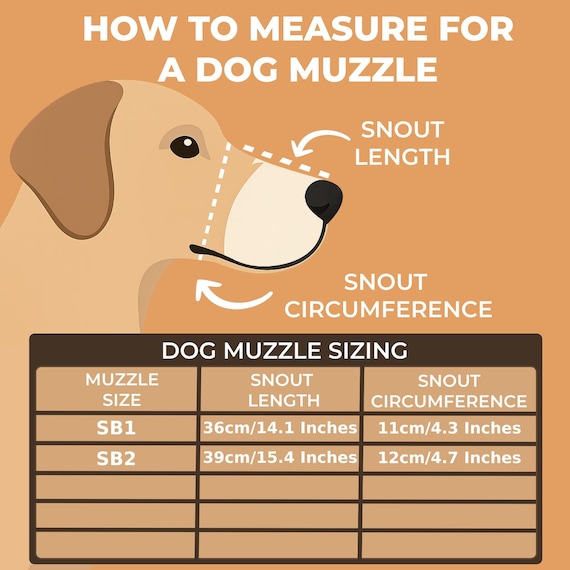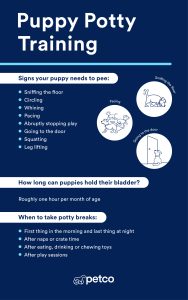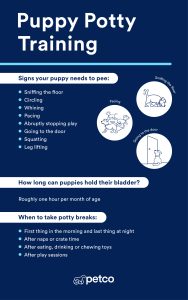If you need to get a muzzle for your dog, getting the right size is key. A muzzle that’s too tight can make your dog uncomfortable, while one that’s too loose won’t do its job properly.
You want your dog to stay safe and comfortable at the same time. In this guide, you’ll learn exactly how to measure your dog for a muzzle, step by step. By the end, you’ll feel confident choosing the perfect fit without any guesswork.
Keep reading to make sure your dog’s muzzle fits just right.
Choose The Right Muzzle Type
Choosing the right muzzle type is key to your dog's comfort and safety. Each dog has different needs, so selecting the proper style matters. A well-chosen muzzle allows your dog to breathe and pant easily. It also prevents biting without causing stress or discomfort.
Common Muzzle Styles
- Basket muzzles:Made from plastic or metal, they allow full mouth movement. Dogs can drink, pant, and take treats.
- Soft muzzles:Made of fabric or mesh, they fit snugly and limit biting. Not for long use or heavy chewing.
- Leather muzzles:Strong and durable, good for training. They limit mouth opening but may feel hot.
- Hybrid muzzles:Combine features of basket and soft muzzles. Offer comfort and safety for some dogs.
Selecting Based On Dog’s Needs
Consider your dog’s behavior and purpose for the muzzle. For aggressive dogs, basket muzzles offer safety and comfort. Soft muzzles suit calm dogs for short periods. Puppies or dogs with sensitive skin may prefer soft or hybrid types.
Also, think about your dog’s size and breed. Large breeds need bigger, stronger muzzles. Small dogs need lightweight, gentle options. Measure your dog carefully for the best fit and avoid irritation or escape.

Credit: www.etsy.com
Gather Necessary Tools
Before you start measuring your dog for a muzzle, it’s important to have the right tools ready. Having everything at hand makes the process smoother and more accurate. It also helps keep your dog calm, as you won’t be fumbling around searching for items.
Measuring Tape Options
Choose a flexible measuring tape, like the ones used in sewing. These tapes bend easily around your dog’s snout and head, giving you precise measurements.
If you don’t have a flexible tape, a piece of string or ribbon can work. Wrap it gently around your dog’s snout, then mark the length and measure it with a ruler.
Some pet stores sell special muzzling measuring tapes with clear markings designed for this task. They can be handy if you plan to measure your dog often or have multiple pets.
Additional Supplies
- Pen and Paper:Jot down your measurements immediately to avoid forgetting them.
- Treats:Keep your dog motivated and calm during the measuring process.
- Helper:An extra pair of hands can gently hold your dog steady, especially if your pet is squirmy.
- Calm Environment:Choose a quiet space to reduce stress for both you and your dog.
Have you ever tried measuring your dog only to realize you forgot the tape? Preparing your tools beforehand saves time and frustration. What other tricks have you found helpful when measuring your furry friend?
Prepare Your Dog
Getting your dog ready before measuring for a muzzle is crucial. A calm and cooperative dog makes the process smoother and ensures you get accurate measurements. Preparation helps avoid stress for both you and your pet, making muzzle fitting a positive experience.
Calming Techniques
Start by creating a quiet environment free from distractions. Speak softly and offer gentle pets to reassure your dog. Try a few deep breaths yourself—your calmness can help settle your dog’s nerves.
If your dog tends to be anxious, use treats or a favorite toy to reward calm behavior. Short, slow petting sessions can ease tension and build trust. Have patience; rushing can cause your dog to resist and make measuring difficult.
Positioning For Accuracy
Position your dog sitting or standing naturally to get the best measurements. Avoid having your dog tilt their head or open their mouth wide, as this can distort size. A familiar surface, like their bed or a mat, can help keep them steady.
Hold your dog gently but firmly—enough to keep them still without causing discomfort. If your dog is particularly wiggly, enlist a helper to keep them calm and steady. This small step can make your measuring far more precise.
Measure Snout Length
Measuring your dog’s snout length accurately is crucial for choosing a muzzle that fits comfortably and securely. A muzzle that’s too short can feel tight and uncomfortable, while one that’s too long might not provide the control or safety you need. Getting this measurement right ensures your dog stays safe and stress-free during walks or vet visits.
Finding The Starting Point
Begin by locating the base of your dog’s snout, where it meets the face. This spot is usually right below the eyes and above the upper jaw. It’s important to be precise here, as starting too far back or forward can throw off the entire measurement.
Try to keep your dog calm and still—sometimes a treat or gentle petting helps. Use a soft tape measure or a piece of string you can mark and measure later. Avoid pulling or pressing the tape too tightly against the fur or skin.
Measuring To The Nose Tip
Next, extend the tape measure from the starting point all the way to the tip of your dog’s nose. Make sure the tape follows the natural curve of the snout without stretching or sagging. This gives the most accurate length.
Double-check the measurement by repeating it a couple of times. Write down the number and add a small margin (about half an inch) for comfort. Have you noticed how different breeds have such unique snout shapes? This step helps you respect those differences while picking the right muzzle.
Measure Snout Circumference
Measuring your dog’s snout circumference is essential to ensure the muzzle fits comfortably and securely. A proper fit prevents discomfort and allows your dog to breathe and pant naturally. Taking this measurement accurately can save you from the hassle of returns or adjustments later.
Locating The Widest Area
Start by finding the widest part of your dog’s snout. This is usually just below the eyes, around the upper jaw. Gently feel around to identify where the snout is thickest.
Use a soft measuring tape for accuracy. Wrap it around the snout at this widest point, making sure it’s snug but not tight. Avoid measuring too close to the nose tip or too far back near the eyes, as these areas won’t give a true circumference.
Ensuring A Snug Fit
Once you have the measurement, add about half an inch (1.3 cm) to allow for movement and comfort. Your dog should be able to open its mouth slightly and pant without the muzzle feeling loose. If the fit is too tight, it could cause stress or injury.
Think about your dog’s behavior during walks. Does your dog pull or try to remove the muzzle? A snug but comfortable fit makes wearing the muzzle less stressful for both of you. You want a balance between security and comfort to keep your dog happy and safe.
Measure Head Circumference
Measuring your dog’s head circumference is essential for choosing the right muzzle size. A well-fitted muzzle ensures comfort and safety for your dog. This measurement helps avoid muzzles that are too tight or too loose, which can cause stress or slipping off.
Use a soft measuring tape or a piece of string to measure around the widest part of your dog’s head. The tape should go behind the ears and around the snout, just above the nose. This gives the most accurate head circumference for fitting the muzzle.
Position Behind Ears
Place the measuring tape just behind your dog’s ears. This spot is the widest part of the head and helps get the correct size. Make sure the tape lies flat and does not twist.
Keep the tape snug but not tight. You want to measure the full circumference without squeezing the skin. The tape should rest comfortably on the fur.
Checking For Comfort
After measuring, check that the muzzle will allow your dog to open its mouth slightly. The muzzle should not press hard against the skin or restrict breathing.
Leave some room for movement—about one to two fingers’ width between tape and skin. This space ensures the muzzle fits securely but comfortably.
Compare Measurements To Size Charts
Comparing your dog's measurements to size charts is a crucial step in choosing the right muzzle. Size charts help you match your dog’s unique dimensions with the available options, ensuring comfort and effectiveness. Without this comparison, you risk buying a muzzle that’s either too tight or too loose, which can cause discomfort or even safety issues.
Reading Manufacturer Guides
Every brand provides a size chart, but not all charts are created equal. Look closely at the measurement points the manufacturer asks for—some focus on snout length, others on circumference or width.
Check the guide for any special instructions, like whether to measure your dog’s mouth when closed or slightly open. This small detail can change which size fits best.
Think about your dog’s behavior, too. If your dog tends to open their mouth wide, you might want to size up slightly, even if the chart suggests otherwise.
Adjusting For Different Brands
Different brands may have slight variations in sizing, even if the numbers look similar. A medium in one brand could fit a large in another.
Always compare your dog’s measurements with each brand’s specific chart instead of assuming sizes are interchangeable.
Try to find reviews or feedback from other dog owners who have bought muzzles from the same brand. They often share helpful tips on whether to size up or down.

Credit: www.muzzletrainingandtips.com.au
Test The Muzzle Fit
Testing the muzzle fit is key to your dog’s comfort and safety. A proper fit stops escape and stress. It also helps your dog breathe and pant easily. Take time to check the fit carefully. Make small adjustments as needed. Watch your dog’s reactions closely during the test.
Checking For Security
Secure fit means the muzzle stays in place. It should not slip off or move too much. Check the straps around the head and neck. They need to be snug but not tight. Make sure the muzzle covers the nose fully. Your dog should not be able to pull it off.
Allowing Breathing And Panting
Good fit lets your dog breathe freely. The muzzle should leave space around the nose. Your dog must be able to pant easily to cool down. Test by watching your dog breathe and pant while wearing it. If breathing is hard or quick, adjust the fit or try a different muzzle.
Tips For Comfortable Muzzle Wearing
Ensuring your dog is comfortable wearing a muzzle is just as important as finding the right size. A well-fitted muzzle should feel secure without causing stress or pain. Comfort helps your dog accept the muzzle willingly, making walks and visits smoother for both of you.
Introducing Gradually
Start by letting your dog see and sniff the muzzle without putting it on. Allow your dog to explore it at their own pace, which builds trust. Next, gently place the muzzle on for a few seconds, then remove it and reward your dog.
Slowly increase the time your dog wears the muzzle during each session. Keep these sessions short and positive to avoid overwhelming your dog. Have you noticed how patience can turn a fearful dog into a calm one?
Positive Reinforcement
Use treats and praise whenever your dog wears the muzzle, even if just for a short time. This creates a positive connection with the muzzle and encourages cooperation. Avoid forcing the muzzle on without reward, as this can create fear and resistance.
You can also offer your dog a favorite toy or chew while wearing the muzzle. This keeps them engaged and distracted from any discomfort. Have you tried pairing the muzzle with something your dog loves to see how they respond?

Credit: miasmuzzles.com
Frequently Asked Questions
How Do I Choose The Right Muzzle Size?
To choose the right muzzle size, measure your dog’s snout length and circumference. Ensure the muzzle allows for panting and drinking. Use a soft tape measure for accuracy. A proper fit ensures comfort and effectiveness. Always check the manufacturer’s sizing guide for specific recommendations.
What Tools Do I Need For Measuring?
For measuring, you’ll need a soft tape measure or a flexible ruler. These tools help accurately measure your dog’s snout length and circumference. Ensure the tape is snug but not tight. This guarantees precise measurements for a comfortable muzzle fit.
Avoid using rigid tools as they may lead to incorrect measurements.
How Tight Should A Dog Muzzle Fit?
A dog muzzle should fit snugly but not too tight. The muzzle should allow your dog to pant and drink comfortably. Ensure it’s secure but not restrictive. A proper fit prevents discomfort and ensures effective use. Regularly check the fit to ensure your dog’s comfort and safety.
Can I Measure My Dog Alone?
Yes, you can measure your dog alone, but it’s easier with help. Use treats to keep your dog still. Gently measure the snout length and circumference. Take your time to ensure accuracy. Having a friend hold your dog can make the process smoother and quicker.
Conclusion
Measuring your dog for a muzzle takes just a few simple steps. Use a soft tape to measure the nose and head carefully. A good fit keeps your dog safe and comfortable. Always double-check your measurements before buying. Proper sizing helps your dog wear the muzzle without stress.
Take your time and be patient during the process. Your dog will thank you with calm and happy behavior. Simple actions bring great results for both you and your pet.

Emily Barker is the founder of ChillDogLife.com, a space dedicated to helping pup parents discover the best dog products, lifestyle tips, and cozy ideas for happier homes.
A lifelong dog lover, Emily combines her passion for pets with a knack for research to share trusted recommendations on everything from toys and furniture to health and everyday care.
Her goal is simple: to make life easier, stylish, and more joyful for dogs and the people who love them.







